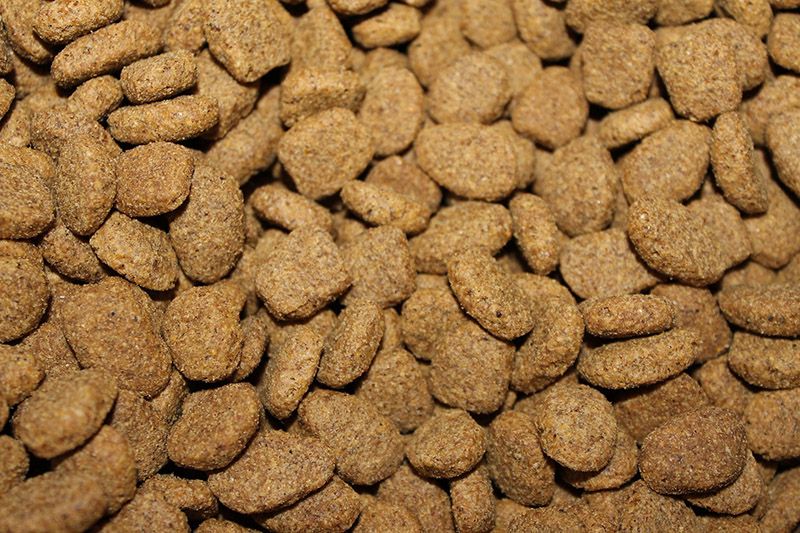
Without going into too much detail on the history of dry commercial kibble diets, the short end of the story is that it was introduced in response to the high cost of meat during the Great Depression and was heavily promoted at the end of WWII when it gained popularity for its convenience, ease of distribution and low cost.
If our pets have managed to survive off this cheaper, convenient, low-quality protein source for the last 80 some years, why should we be concerned about it?
Kibble diets are by and large the most common form of pet food. Kibble is convenient, long-lasting, and easy to store.
While it is not the “perfect” diet for dogs or cats, a high-quality meat-based kibble is a safe and healthy way to feed your pet.
When choosing a kibble, beware of “gimmicks”. Breed-specific formulas, weight loss formulas, varying shapes and textures, and many other claims are usually marketing ploys. The proof is in the ingredient list and the integrity of the manufacturer.
Pros
- Convenient.
- Easy to serve and store.
- Requires no extra precautions or refrigeration.
- Longer shelf life. Can be purchased in larger quantities meaning fewer trips to the store.
Cons
- Low moisture content. Not enough moisture means dogs and cats must drink more. This can be particularly difficult to accomplish for cats.
- Essential raw enzymes are cooked.
- Higher carbohydrate content. The processing of kibble requires a “binder” – to hold the bits of food together. This requires a starch of some kind, which means it has a higher carb content than other foods.
At Whole Pet, we research and carry dry kibble that DOES NOT contain corn, wheat, soybean, colors, harmful preservatives, by-products, unnamed meat sources, etc.. and comes from companies that are transparent about the sourcing and manufacturing of their ingredients and formulas.
When you visit our stores, you will find that to add to the better kibble we carry, we will recommend a topper such as raw, freeze-dried raw, bone broth, goat milk, the better-quality canned foods that we carry, or even filtered water. Why? Because dry kibble lacks moisture. Cats and dogs absorb moisture best when introduced from a food source -vs- just drinking water only.

We do believe that raw feeding is the top feeding for dogs and especially cats, but we do know that not everyone can afford to and/or wants to feed straight raw. We encourage you to consider adding a moisture-rich topper to the dry kibble we carry because well fed dogs and cats make for happier companions.
